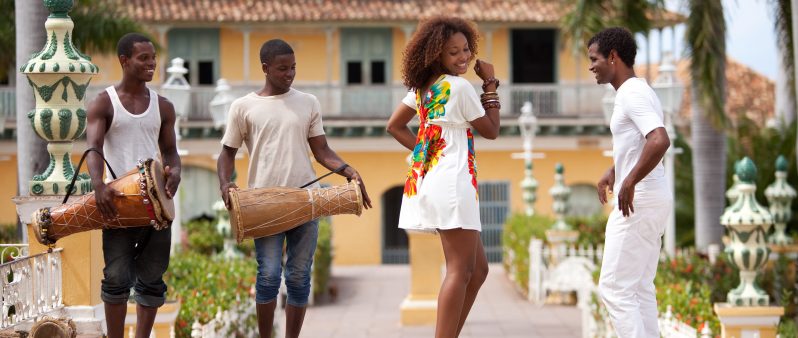
There are many challenges for an English speaker trying to learn how to speak Spanish. Adjectives and nouns are placed in a different order.
Verbs must be conjugated to agree with their subjects in person, gender, and number. And then, there’s the pronunciation, with all those rolled r’s! Not to mention the r’s that aren’t rolled but “flipped.” Some people just decide it’s too hard and give up. Don’t give up. You can do this.
Let’s start with those r’s and double r’s. Both are pronounced by holding the tip of the tongue near the front of the roof of the mouth and blowing air past it, causing it to flutter – a quick flutter for the single r, a longer one for the double r. Go ahead, try it. While this can be challenging if you didn’t grow up making that sound, I’ve found that a more common problem than an inability to make the r sounds is a tendency to overdo it. Once that tongue learns to flutter, it just doesn’t want to stop. Me comí una pera becomes Me comí una perra, and just like that, instead of eating a pear, I ate a dog. In rolling your r’s, as in many other endeavors, there can be too much of a good thing.
How to Speak Spanish: Move Your Hips
While it may seem far-fetched, I think there’s an analogous relationship between speaking Spanish and Latin dancing. Both involve movements that are not part of the Anglophone cultural vocabulary. In speaking, those movements occur in the mouth; in dancing, in the hips. Just as the tip of the tongue must be trained to move independently of the base, the hips must be trained to move independently of the upper body. When you watch good salsa dancers, it looks as if their torsos are floating through space while their legs execute all manner of amazing footwork.
Many years ago, a Latin dance instructor I knew showed me a great trick for helping people develop that independence between lower and upper body: Pretend you’re riding a bike. Standing in place, with your feet just a few inches apart, begin to “pedal,” lifting one heel and then lowering it as you lift the other. Hold your torso still (but not stiff), hinge at the waist, and feel your hips moving side to side as you shift your weight. Soon, you can feel the magic of your hips moving without bringing the rest of you along. People get very excited when they learn this. Sometimes too excited. Like the runaway rolling rrrrrrr’s, the gyrating hips can get out of control, giving the fledgling salsero a rather peculiar style and creating a minor hazard for fellow dancers.
The Spanish language and Latin dancing both embody an important element of Hispanic culture: Controlled exuberance. Enjoy the thrill of your tongue fluttering, the rhythmic swaying of your hips, but don’t get carried away with it. Master this, and you’re on your way to learning how to speak Spanish, or dancing, without an accent.
No Comments for "How Latin Dancing Can Help You Learn to Speak Spanish"